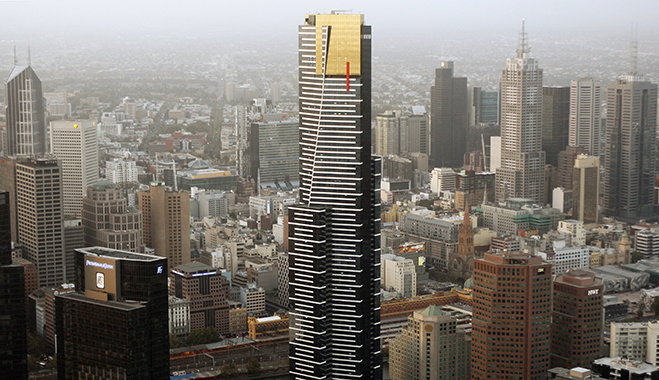
Despite somehow weathering the great global recession of 2008 with very little damage incurred, fast forward to late 2014, and the Australian economy’s gold streak is well and truly over. The mining investment boom, which lasted a decade and contributed 13 percent to real per capita household disposable income per year since 2002, has come to its inevitable bitter end, and other industries have been slow to fill the gaping hole it’s left in the economy. An RBA report released in August found that without the mining boom, Australia’s unemployment rate would have risen by 0.75 percent during the global financial crisis, which suggests dark times could be ahead for the nation in its absence.
Slowing growth in China has had a detrimental long-term impact on commodity prices, most notably coal and iron ore, the latter of which has fallen by over 40 percent in just one year. This has contributed further to the loss of resource-related roles as firms experiencing a decline in profits seek to cut costs in other areas. And lower-than-expected growth in 2014 has set a disheartening precedent for 2015, with the IMF predicting that growth won’t exceed three percent for the next five years. The Australian economy’s downturn comes in the midst of its major transformation, as the main driver of activity shifts from investment in resources projects to a broader variety of non-resource based sectors.
Sitting at 6.2 percent in October, Australia’s unemployment rate is set to be the second-worst in the Asia-Pacific region over the next two years with only the Philippines lagging behind; a heightened concern when considering the amount of significantly less developed, emerging economies in this region. 2014 has seen the rate reach a 12-year high of 6.4 percent, and in 2015, the IMF predicts a reduction of just 0.1 percent, while the Philippines’ is predicted to fall from 6.9 to 6.8 percent.
In such a fragile global and domestic climate, employers have been understandably reluctant to hire. And although the Australian working population is dwindling as the baby boomers reach retirement, this does seem to be picking up: the participation rate climbed 0.1 percent in November to 64.7 percent, somewhat offsetting the employment rate, which climbed to 6.26 percent. A high rate of joblessness has led to a deceleration of wage growth, which has then in turn helped to control inflation.
In July, the Reserve Bank of Australia (RBA) said employment was likely to remain low “well into 2015,” picking up only very gradually over the next few years. The RBA’s assistant governor Christopher Kent anticipates some progress in late 2015, when GDP growth should eventually pick up to an above-trend pace. Although many anticipated interest rates to remain at a record low of 2.5 percent, where it has been for 16 months, further joblessness growth in recent months suggests the RBA may be inclined to reassess.
Unemployment data is distorted somewhat by the fact that it doesn’t take the under-employed – those in a part-time or casual position, who would prefer to be in full-time work – into account. And as in most cases, the slump is felt most tangibly among young people, where the joblessness rate climbs to over 14 percent, topping 28 percent in certain regions. The pool of entry-level jobs is diminishing fast, and if employment is achieved, the role is likely to be casual, temporary or part-time, and therefore less likely to offer opportunities to progress. A September 2014 report by the Brotherhood of St Laurence warns of today’s youth becoming a “lost generation” if drastic action is not taken soon.
Prime minister Tony Abbott has put forward various schemes as solutions, for example, making the government’s Work for the Dole programme compulsory for all unemployed people – which will in fact come into effect on 1 July 2015. Or, insisting that jobseekers must apply for 40 jobs per month before they can receive the meagre Newstart allowance. However many of these schemes, including the 40-application quota, have largely been met with a chorus of criticism for how they punish the jobless without solving the fundamental issue of a lack of jobs. The government has also set aside $500,000 to pilot an education scheme which would see more vocational and technical subjects made available to students alongside the standard high school curriculum.
If a new sector doesn’t step up to the plate and fill mining’s boots soon, the Australian economy is at a heightened risk of falling into recession. Steps must be taken in 2015 to open up more roles, particularly for young people, or the “lost generation” could become a reality in the not so distant future.



